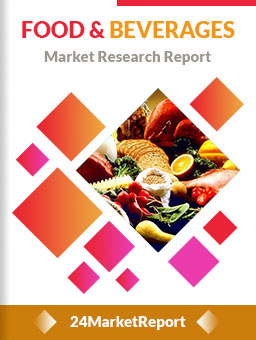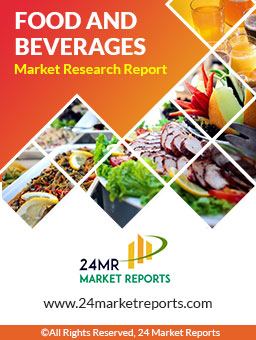
Download FREE Report Sample
Download Free sampleMARKET INSIGHTS
The global tin stabilizer for PVC market size was valued at USD 808 million in 2024. The market is projected to grow from USD 839 million in 2025 to USD 1.06 billion by 2032, exhibiting a CAGR of 4.0% during the forecast period.
Tin stabilizers are heat stabilizers that prevent PVC degradation during processing and extend product lifespan. These organotin compounds primarily protect PVC polymers from thermal breakdown during extrusion and molding processes, making them indispensable for manufacturing durable PVC products. The technology finds extensive use in rigid PVC applications like pipes, window profiles, and fittings, where stability under high temperatures is critical.
Market growth is being driven by expanding construction activities globally, particularly in developing economies where PVC pipe demand continues to rise. However, environmental concerns regarding tin-based stabilizers are prompting manufacturers to invest in eco-friendly alternatives. Recent developments include Akdeniz Chemson's 2023 launch of low-migration tin stabilizers for food-contact PVC applications, addressing evolving regulatory requirements. The industry's competitive landscape remains concentrated, with the top three players holding nearly 30% market share as of 2024.
Booming Construction Industry to Propel Demand for PVC Stabilizers
The global construction sector, valued at over $13 trillion annually, is experiencing robust growth with increasing infrastructure projects across emerging economies. This directly drives demand for PVC products like pipes, fittings, and siding where tin stabilizers are crucial additives. The Asia Pacific region alone accounts for nearly 45% of global construction activity, explaining its dominant 62% share in the tin stabilizer market. With countries like India and China investing heavily in urbanization initiatives, the critical role of PVC in cost-effective and durable construction solutions will continue supporting market expansion.
Stringent Regulations Promoting Lead-free Stabilizers to Fuel Market Growth
To know more about market statistics, Download a FREE Sample copy
Environmental regulations worldwide are increasingly prohibiting lead-based stabilizers due to toxicity concerns, creating substantial opportunities for tin-based alternatives. The European Union's REACH regulations and similar policies in North America have accelerated this transition. Tin stabilizers currently hold approximately 30% of the global PVC stabilizer market as manufacturers comply with these mandates. Recent developments show this trend strengthening, with additional countries expected to implement lead phase-out policies in their construction and consumer product standards within the next 5 years.
Furthermore, quality certifications for PVC products now frequently require documentation of eco-friendly stabilizer use, prompting formulators to adopt tin-based systems.
➤ Industry analysis indicates over 75% of new PVC formulation patents filed in 2023-24 feature tin or other heavy metal-free stabilization systems.
The combined effect of regulatory pressure and shifting consumer preferences toward sustainable materials positions tin stabilizers for sustained growth across multiple PVC applications.
Price Volatility of Raw Materials to Challenge Market Expansion
The tin stabilizer market faces significant pressure from fluctuating raw material costs, particularly tin metal prices which have shown 15-20% annual volatility in recent years. As tin accounts for approximately 40-60% of stabilizer production costs, these variations directly impact manufacturer margins and product pricing stability. While the market has grown consistently, these cost uncertainties discourage long-term investment in production capacity expansion. Smaller manufacturers particularly struggle to maintain profitability during price spikes, creating consolidation pressures within the industry.
Additionally, geopolitical factors affecting tin mining and refining operations in key producing regions introduce further supply chain vulnerabilities. These market conditions pose ongoing challenges for stakeholders aiming to maintain competitive pricing while meeting quality standards.
Technical Limitations in High-temperature Applications to Constrain Usage
While tin stabilizers perform exceptionally well for most rigid PVC applications, they face performance limitations in extremely high-temperature processing conditions exceeding 200°C. Market data shows this restricts their adoption in approximately 12-15% of potential PVC applications where alternative stabilizer systems remain necessary. Ongoing R&D aims to expand the thermal stability range of tin-based formulations, but achieving parity with lead-based stabilizers' performance characteristics remains challenging.
Other Challenges
Processing Complexity
Tin stabilizers require precise formulation and processing conditions to achieve optimal performance, creating technical barriers for some converters. This particularly affects smaller manufacturers with limited technical resources.
Regulatory Scrutiny
While currently preferred over lead stabilizers, some tin compounds face increasing regulatory examination regarding potential environmental persistence, requiring continuous formulation improvements.
Emerging Bio-based Tin Stabilizer Formulations to Unlock New Growth Potential
Innovative bio-based tin stabilizer formulations present significant opportunities, particularly in Europe and North America where sustainability mandates are strongest. Recent advancements have produced partially renewable tin stabilizers that maintain performance while reducing the carbon footprint by up to 30%. With the global green chemistry market projected to exceed $25 billion by 2026, these developments position tin stabilizers to capture growing demand for eco-friendly additives across multiple industries.
Additionally, strategic partnerships between stabilizer producers and PVC manufacturers are accelerating product development cycles, with several major players announcing joint initiatives to commercialize next-generation formulations within the next 2-3 years. These collaborations aim to address current performance limitations while enhancing environmental profiles, potentially opening new application areas for tin-stabilized PVC products.
Liquid Segment Dominates the Market Due to Superior Processing Efficiency in PVC Manufacturing
The market is segmented based on type into:
Liquid
Powder
PVC Hard Pipe Segment Leads Owing to Extensive Usage in Construction and Infrastructure
The market is segmented based on application into:
PVC Hard Pipe
PVC Hose
Fittings
Construction Sector Remains Prime Consumer Due to High PVC Demand for Building Materials
The market is segmented based on end-use industry into:
Construction
Automotive
Healthcare
Consumer Goods
Established Players and Emerging Competitors Vie for Market Share in PVC Additives Space
The global tin stabilizer for PVC market exhibits a moderately concentrated competitive structure, where Akdeniz Chemson, Baerlocher, and PMC collectively dominate approximately 30% of the market. These leading players leverage their extensive product portfolios and established supply chains across key PVC manufacturing regions. Notably, the Asia Pacific market—accounting for 62% of global demand—has become a strategic battleground for market share acquisition.
Valtris Specialty Chemicals and Galata Chemicals have emerged as strong secondary players, diversifying their offerings to include high-performance tin stabilizers for specialty PVC applications. Their growth strategies emphasize collaborative R&D with PVC manufacturers to develop formulations meeting evolving regulatory standards, particularly in European and North American markets.
Several manufacturers are pursuing vertical integration strategies to secure raw material supplies and optimize production costs. Yunnan Tin, as both a tin producer and stabilizer manufacturer, exemplifies this trend with its integrated supply chain advantage in the Asian market. Meanwhile, SONGWON has been expanding its production capacities through strategic partnerships to strengthen its position in the liquid tin stabilizer segment, which commands 82% of the market by product type.
Recent competitive developments include increasing investments in sustainable formulations, with companies like Reagens Group and Pau Tai Industrial Corporation introducing low-VOC tin stabilizer alternatives. This product innovation focus aligns with tightening environmental regulations worldwide, creating both challenges and opportunities for market participants.
Akdeniz Chemson (Turkey)
Baerlocher GmbH (Germany)
PMC Group (U.S.)
Valtris Specialty Chemicals (U.S.)
Galata Chemicals (Netherlands/U.S.)
Yunnan Tin Group (China)
SONGWON (South Korea)
Nitto Kasei Co., Ltd. (Japan)
Hubei Benxing New Material (China)
UNISTARS (China)
Westlake Akishima (Japan)
Pau Tai Industrial Corporation (Taiwan)
Patcham FZC (UAE)
Reagens Group (Italy)
Hangzhou Juxing New Materials Technology (China)
Goldstab Organics Pvt. Ltd. (India)
The global tin stabilizer market is witnessing a paradigm shift toward eco-friendly formulations in response to tightening environmental regulations. Manufacturers are investing heavily in developing low-toxicity organotin compounds that meet REACH and RoHS compliance standards without compromising PVC performance. Recent advancements include mercury-free stabilizer systems with improved thermal stability at processing temperatures exceeding 180°C. The liquid tin stabilizer segment, commanding 82% market share, is at the forefront of these innovations due to easier formulation flexibility and superior dispersion characteristics compared to powder variants.
Asia-Pacific's Construction Boom
With 62% global market dominance, Asia-Pacific's insatiable demand for PVC pipes in water infrastructure projects continues to drive tin stabilizer consumption. China's 'Sponge City' initiative targeting urban drainage upgrades and India's Jal Jeevan Mission for rural water supply are creating sustained demand for 58% of tin stabilizers used in PVC hard pipes. Market intelligence suggests this regional growth will maintain a 4.8% CAGR through 2032, significantly higher than the global average, fueled by ongoing urbanization and government-led housing schemes.
Leading players like Akdeniz Chemson and Baerlocher are securing competitive advantage through backward integration into tin feedstock production. This strategic move mitigates price volatility risks associated with tin metal, which constitutes 35-45% of stabilizer production costs. Concurrently, manufacturers are establishing regional blending facilities near major PVC compounding hubs to reduce logistics expenses, which account for 18-22% of total operational costs in this bulk chemical business. Such optimizations are crucial as the market consolidates, with the top three players now controlling 30% of global capacity.
North America
The North American market for tin stabilizers in PVC applications is driven by stringent environmental regulations, particularly those enforced by the U.S. Environmental Protection Agency (EPA) and state-level agencies, which emphasize low-toxicity stabilizers. With a market share of approximately 14%, the region prioritizes high-performance PVC formulations for construction materials like pipes and window profiles due to their durability and compliance with sustainability standards. Liquid tin stabilizers dominate the market here, driven by their ease of application in industrial processes. The Infrastructure Investment and Jobs Act (IIJA), with its focus on modernizing water and sewage systems, is expected to further boost demand for PVC pipes, indirectly supporting the tin stabilizer market. However, manufacturers face challenges from increasing preference for non-toxic calcium-based stabilizers in certain segments.
Europe
Europe, holding a 17% market share, is characterized by strict regulatory oversight under REACH and the Circular Economy Action Plan, pushing manufacturers toward safer tin stabilizer alternatives with reduced environmental impact. Germany and France lead in adoption due to well-established PVC industries and high construction standards. The region's focus on recycling PVC waste creates opportunities for stabilizers compatible with closed-loop processes, though this also pressures traditional tin-based formulations. Major players like Baerlocher and Akdeniz Chemson are investing in R&D to improve product sustainability. Despite a mature market, infrastructure renovation projects and energy-efficient building trends sustain steady demand. Eastern Europe shows slower growth due to price sensitivity but benefits from lower regulatory hurdles compared to Western markets.
Asia-Pacific
As the dominant region with 62% of global demand, Asia-Pacific's growth is fueled by China's massive PVC pipe production and India's expanding construction sector. China alone accounts for over 40% of consumption, supported by government-backed urbanization initiatives and water infrastructure projects. Cost competitiveness drives preference for liquid tin stabilizers, though environmental concerns are prompting gradual shifts toward modified formulations. Southeast Asian nations like Vietnam and Indonesia exhibit rapid growth but face quality standardization challenges. Japan and South Korea focus on high-grade stabilizers for precision applications, reflecting their advanced manufacturing sectors. Despite price volatility in raw materials, regional production capacities continue expanding to meet local demand, often outpacing environmental compliance measures in developing markets.
South America
South America presents mixed dynamics, with Brazil and Argentina leading in PVC consumption for agricultural and residential piping systems. Economic instability and currency fluctuations hamper consistent market growth, causing intermittent shortages of imported stabilizers. While regional production exists, reliance on foreign technology persists. The lack of uniform regulations allows conventional tin stabilizers to dominate, though multinational corporations are introducing safer alternatives through joint ventures. Infrastructure gaps in water distribution networks offer long-term potential, particularly if economic conditions stabilize. Local manufacturers struggle to compete with Asian imports on price, creating a fragmented supplier landscape with varying product quality standards across countries.
Middle East & Africa
This emerging region shows promising growth in PVC applications for oil/gas pipes and construction amid urbanization projects in GCC countries. Saudi Arabia and the UAE drive demand through infrastructure megaprojects requiring durable piping systems. Africa's market remains underdeveloped outside South Africa and Egypt, constrained by limited manufacturing capabilities and reliance on imported PVC products. The absence of strict chemical regulations permits continued use of standard tin stabilizers, though multinational suppliers are testing modified formulas for extreme climate performance. Water scarcity issues are gradually increasing investments in irrigation and municipal piping networks, which could accelerate market expansion if paired with stable economic policies and foreign investment inflows.
This market research report offers a holistic overview of global and regional markets for the forecast period 2025–2032. It presents accurate and actionable insights based on a blend of primary and secondary research.
✅ Market Overview
Global and regional market size (historical & forecast)
Growth trends and value/volume projections
✅ Segmentation Analysis
By product type or category
By application or usage area
By end-user industry
By distribution channel (if applicable)
✅ Regional Insights
North America, Europe, Asia-Pacific, Latin America, Middle East & Africa
Country-level data for key markets
✅ Competitive Landscape
Company profiles and market share analysis
Key strategies: M&A, partnerships, expansions
Product portfolio and pricing strategies
✅ Technology & Innovation
Emerging technologies and R&D trends
Automation, digitalization, sustainability initiatives
Impact of AI, IoT, or other disruptors (where applicable)
✅ Market Dynamics
Key drivers supporting market growth
Restraints and potential risk factors
Supply chain trends and challenges
✅ Opportunities & Recommendations
High-growth segments
Investment hotspots
Strategic suggestions for stakeholders
✅ Stakeholder Insights
Target audience includes manufacturers, suppliers, distributors, investors, regulators, and policymakers
-> Key players include Akdeniz Chemson, Baerlocher, PMC, Valtris, Galata Chemicals, Yunnan Tin, SONGWON, and Nitto Kasei, among others.
-> Key growth drivers include rising PVC demand in construction, increasing infrastructure development, and expanding applications in medical and consumer goods.
-> Asia-Pacific dominates with 62% market share, followed by Europe (17%) and North America (14%).
-> Emerging trends include development of eco-friendly stabilizers, regulatory compliance innovations, and technological advancements in PVC processing.

Speak to our Custom Research Team and get the Custom Research in a budget
Custom ResearchFrequently Asked Questions ?
A license granted to one user. Rules or conditions might be applied for e.g. the use of electric files (PDFs) or printings, depending on product.
A license granted to multiple users.
A license granted to a single business site/establishment.
A license granted to all employees within organisation access to the product.
Upto Working 24 to 48 hrs
Upto 72 hrs max - Weekends and Public Holidays
Online Payments with PayPal and CCavenue
Wire Transfer/Bank Transfer
Hard Copy




 Industry Market Size
Industry Market Size SWOT Analysis
SWOT Analysis Industry Major Players
Industry Major Players Revenue Forecasts
Revenue Forecasts Historical and Forecast Growth
Historical and Forecast Growth Profitability Analysis
Profitability Analysis
























